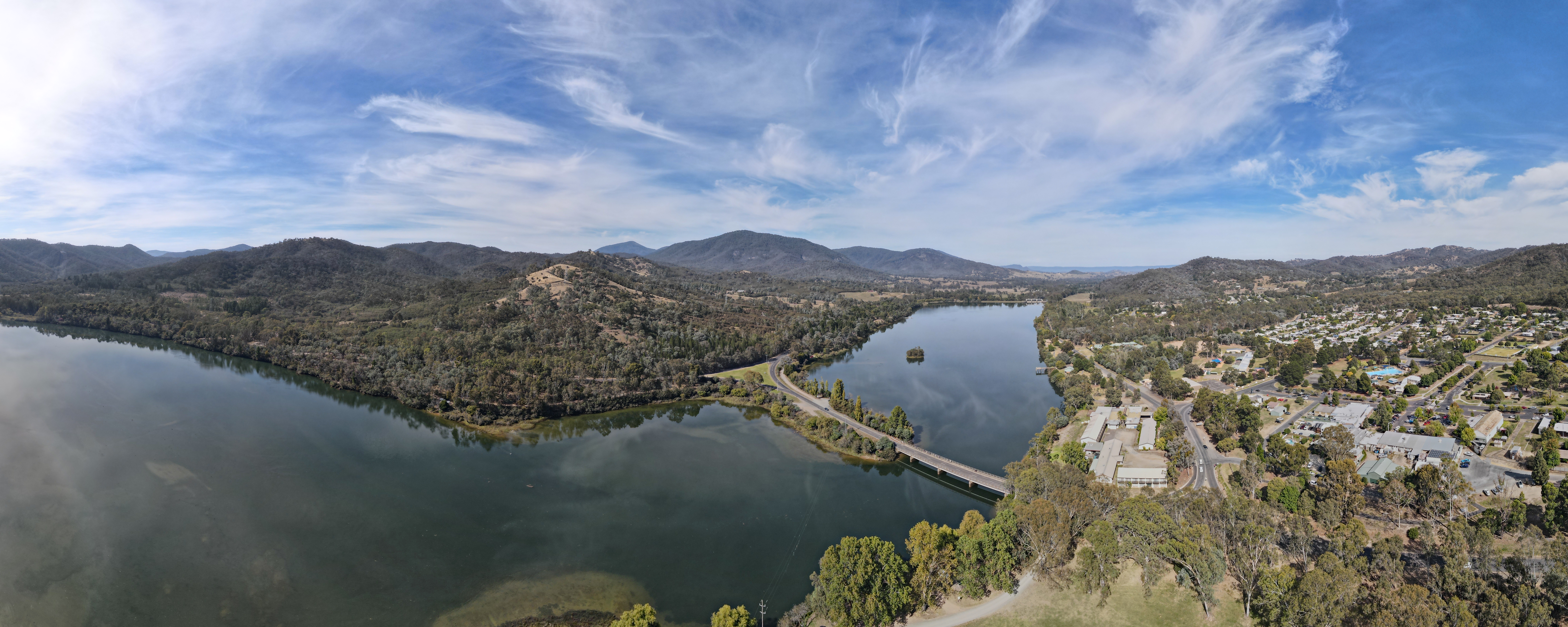|
Rubicon, Victoria
Rubicon is a locality in Victoria, Australia, located in the Shire of Murrindindi. It is situated on the Rubicon River. In the 2021 census, Rubicon had a population of 44. Much of the locality consists today of forested protected areas, variously including the Yarra Ranges National Park, Rubicon State Forest, Rubicon Valley Historic and Cultural Features Reserve, Marysville State Forest, Mount Bullfight Nature Conservation Reserve and Cathedral Range State Park. It was once home to a significant timber industry, which was connected to the railhead at Alexandra by a network of tramways. It was severely damaged by the 1939 Black Friday bushfires and the local sawmill industry was phased out by 1953, though the forest continues to be used for logging to some extent. The Rubicon Hydro-Electric Scheme was established in 1928–29 to harness electricity from the Rubicon River and Royston River, and still functions today, though providing a far smaller proportion of the state's ... [...More Info...] [...Related Items...] OR: [Wikipedia] [Google] [Baidu] |
|
 |
Eildon, Victoria
Eildon is a town in central Victoria, Australia. It is located near Lake Eildon, on the Goulburn Valley Highway, in the Shire of Murrindindi local government area. At the 2016 census, Eildon had a population of 974. Taungurung people are the Traditional Owners of the land around Eildon (which stretches north-east beyond Mansfield, Victoria and to the west nearly to Bendigo). Taungurung country is part of the Kulin nation. The name Eildon was given to the township by some of the first white settlers in the area, Mr and Mrs Archibald Thom in 1846, and was so named for its similarities to Mrs Thom's birthplace in the Eildon Hills near Abottsford in Scotland. History Eildon as a township came about due to the construction of the Sugarloaf Reservoir. The township of Darlingford (which was located near the junction of Big River and the Goulburn River) was established in the 1860s, when gold was discovered nearby, however when the construction of the reservoir commenced in 1915, ... [...More Info...] [...Related Items...] OR: [Wikipedia] [Google] [Baidu] |